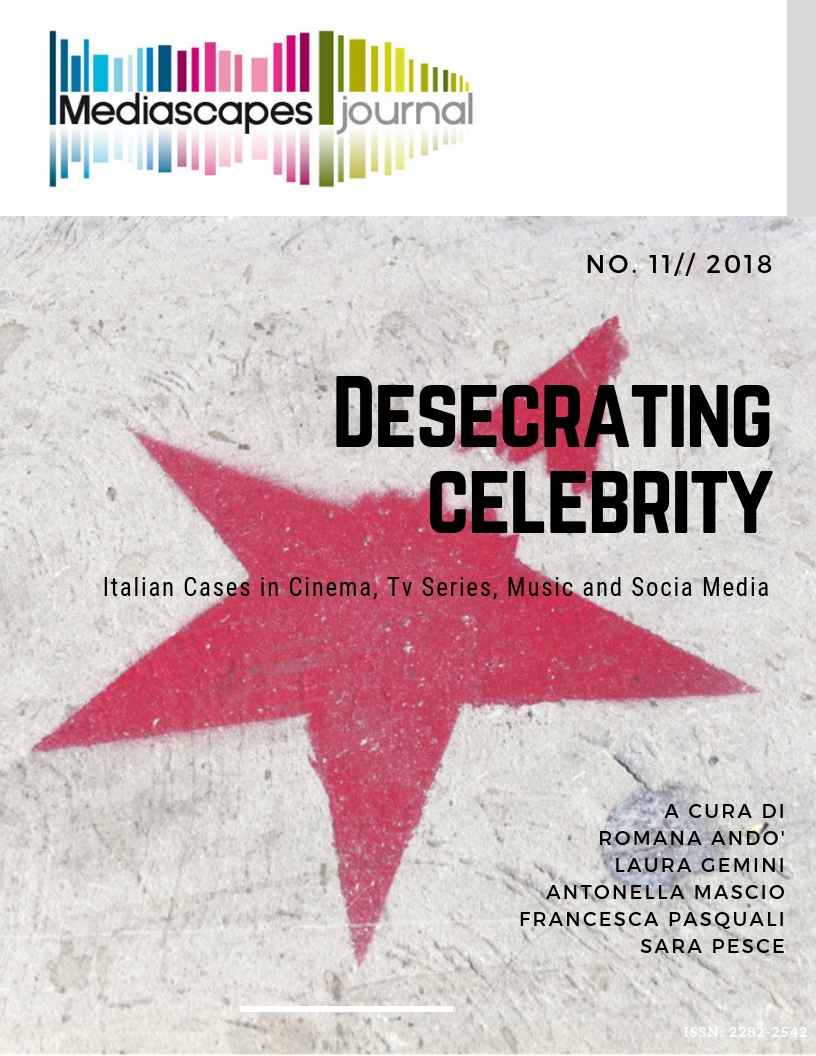Where is the sacred in online celebrity? Praise, loath and physical interaction with Italian webstars
Abstract
This paper aims to investigate how the online proximity between internet celebrities and their audiences is translated in physical settings, through a multi-sited ethnography that explores fan-star interaction in offline events where Italian webstars participate. Events where fans meet celebrities are among the most relevant media rituals (Couldry, 2003) where the celebrity status is reproduced, particularly through the definition of specific rules of interaction that mark the exceptionality of the famous person. However, in the social media landscape, the interaction with celebrities – especially with internet born stars – shifts from being relegated to rarity or para-sociality, to be a more frequent possibility of multisocial interaction (Hills, 2015). This increased potential for interaction doesn’t necessarily correspond to an undermining of the symbolic distance between audiences and highly visible people. In the case of Italian webstars, for example, such passage from scarcity to abundance of presence have produced two very different scenarios: on the one hand we have social media stars that cultivate a deep intimacy with their fans, and are therefore requested to perform friendship, closeness and equality; on the other hand we find “trash stars”, people famous because they are ridiculed or ironically praised by networked publics, who are demanded to perform a stylized “memetic” version of themselves. By examining twelve occasions where Italian webstars participate in parties, book signing events and meet-and-greet events, this study will try to show 1) the existence of two distinct types of proximity with social media celebrities: one that is “fast”, bounded to the event and interested in preserving the idol’s exceptionality, and one that is “extended”, repeated in time and aimed at an emotional and physical intimacy, 2) how this encounters can be regarded as instances of the “bio-economic sacred” (Mellor & Shilling, 2014), which is affectively stronger in extended proximity but formally more present in fast proximity.
##submission.downloads##
Pubblicato
Come citare
Fascicolo
Sezione
Licenza
Gli autori che pubblicano su questa rivista accettano le seguenti condizioni:
- Gli autori mantengono i diritti sulla loro opera e cedono alla rivista il diritto di prima pubblicazione dell'opera, contemporaneamente licenziata sotto una Licenza Creative Commons - Attribuzione che permette ad altri di condividere l'opera indicando la paternità intellettuale e la prima pubblicazione su questa rivista.
- Gli autori possono aderire ad altri accordi di licenza non esclusiva per la distribuzione della versione dell'opera pubblicata (es. depositarla in un archivio istituzionale o pubblicarla in una monografia), a patto di indicare che la prima pubblicazione è avvenuta su questa rivista.
- Gli autori possono diffondere la loro opera online (es. in repository istituzionali o nel loro sito web) prima e durante il processo di submission, poiché può portare a scambi produttivi e aumentare le citazioni dell'opera pubblicata (Vedi The Effect of Open Access).


